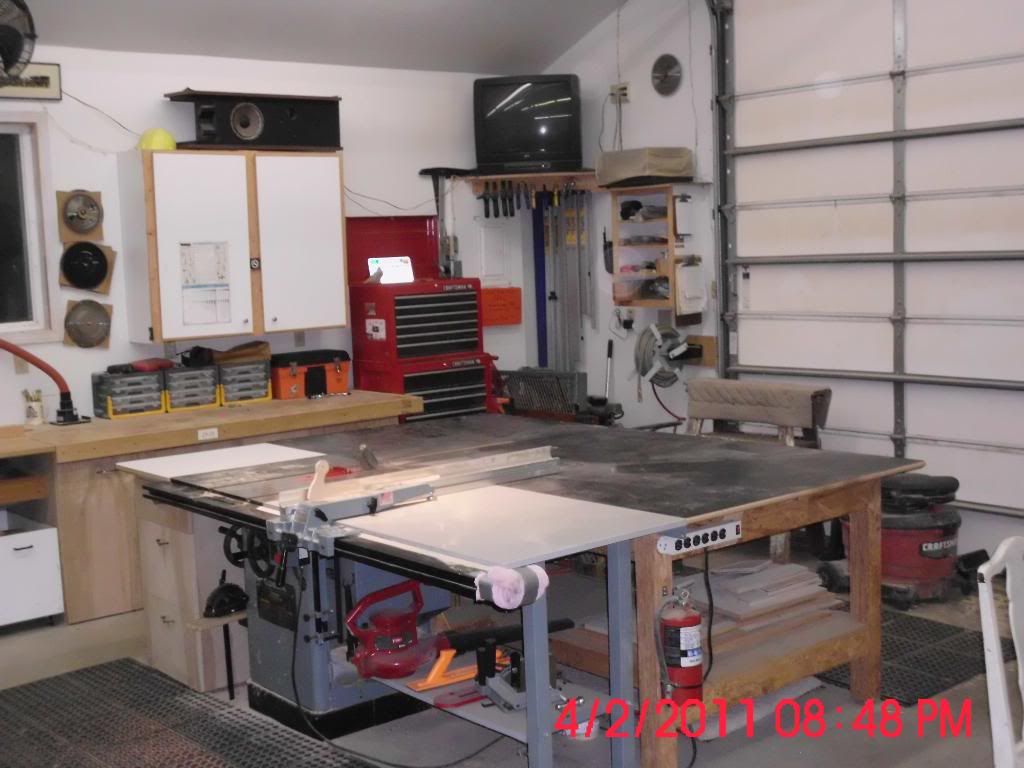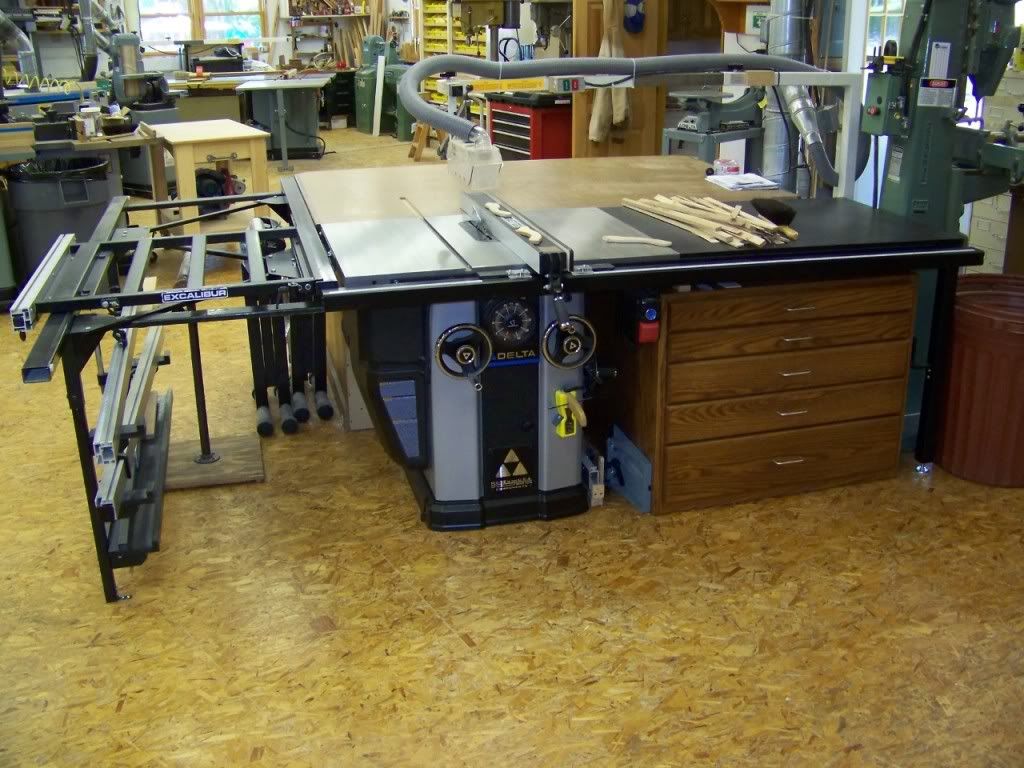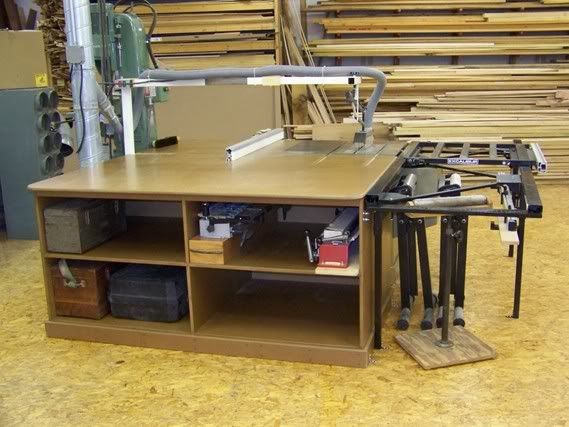I'm in the process of researching designs for a combined table saw outfeed table/assembly table for my new cabinet saw. I'd appreciate recommendations on features I should consider for incorporation into this table. My shop is long and narrow, so one end of the TS will be up against the wall. Recommendation on size, storage features, mobility, etc are greatly appreciated. My current thoughts are that I have enough shop space to have a permanent table (no need to fold down), and I'd like to incorporate sufficient storage for small electrical hand tools and their storage containers. Thanks.
Brad




 Reply With Quote
Reply With Quote










